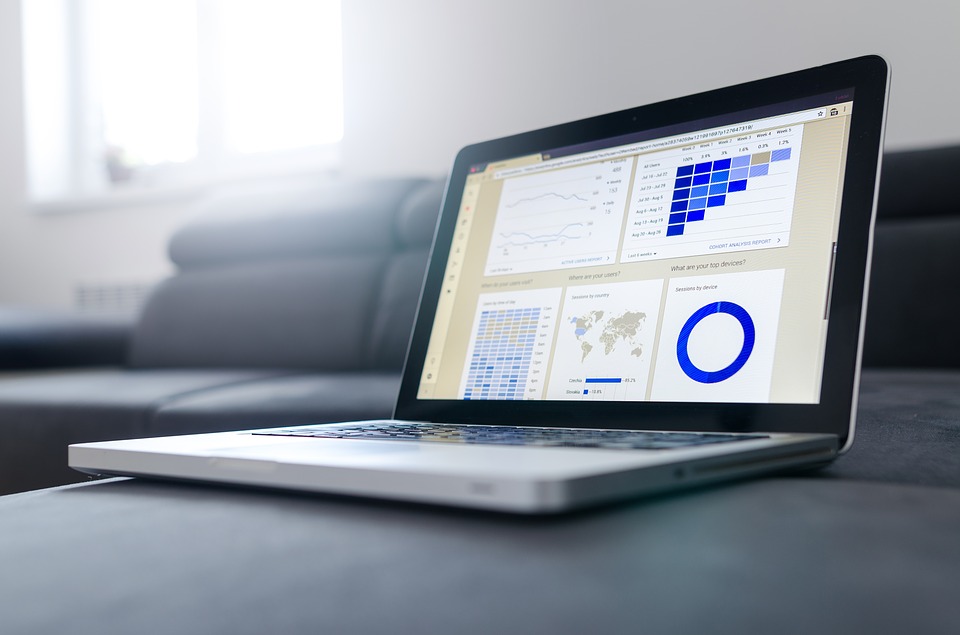It’s no secret that ecommerce data and analytics have become buzzwords for business development success, and a critical consideration for anyone who hopes to grow their ecommerce enterprise in 2018.
There is much to be learnt from your business data; everything from the buying patterns of your customers to the performance of individual web pages is contained within, if you know how to interpret it. And as the sophistication of analytics formulae increases, it is becoming possible to draw even more in-depth insights from key data sets, allowing you to optimise your business like never before.
1. Greater Focus on User Experience
At the heart of digital marketing is user experience. It’s no longer about being noticed by as many people as possible, but rather building powerful relationships with a core audience of engaged individuals.
This means your data-driven insights should be used to power improved accessibility and usability of your website, applications, and content. Your data can be used to improve recommendations, optimise ad campaigns, and even provide accurate ROI estimations so you can take calculated risks to further the growth of your business.
Online consumers now expect a far higher standard of interaction when communicating with brands, so it is vital not to overlook this aspect of your data strategy. The following points will explore many of the ways data can contribute to the user experience, including developing sophisticated chatbots, marketing automation, and analysis of unstructured data.
2. The Rise of Conversational Analytics
You’ve probably heard all the hype around chatbots, and how they are transforming the face of customer service. Well, it’s true – chatbots have become so advanced that they successfully replace human support services for a wide range of industries. Using detailed databases and NLP technology, they can handle most basic queries, and a large number of more complex questions. If they run into difficulties, they then can hand over to a human agent if required.
So how does this fit into the analytics portfolio? The beauty of conversational analytics is that you can view every step of a user’s conversation with a chatbot, and see exactly when that user either converted or left the conversation. This enables you to better understand your audience, and improve future interactions.
Combining this with data segmentation means you can then ramp up your user experience by providing chatbots.
3. Even More Predictive and Prescriptive Analytics
The usual story for data and analytics is that you want to look back over old data to figure out what will happen in the future (predictive) and what you should do about it (prescriptive). This is not likely to be any less the case in 2018, as it’s simply too important to be able to make informed estimates about customer behaviour, and optimise accordingly.
The difference in 2018 is that we’ve gotten even better at making those predictions, thanks to improvements in machine learning and AI technology. Tailored marketing communications and in-depth taste profiles are now more accurate than ever. Meanwhile, automation has become powerful enough to enable brands to shift a huge portion of their marketing efforts over to AI systems, freeing up resources to focus on other areas of the business.
It’s also impacting forecasting and the ways in which people invest and monetise their brands. In today’s market, more and more ecommerce websites and businesses are for sale before they even hit their three year mark — so it’s imperative that merchants and investors have realistic, data-led predictive analytics. Valuing ecommerce businesses well above their market value is not healthy for the industry. Realistic figures that are in-line with consumer trends are needed to ensure the industry stays healthy and attracts investors.
4. Insights from Unstructured Data
Advances in deep learning technology have opened up new doors for data analysis. Many businesses have terabytes of old data that have formerly been almost impossible to analyse efficiently due to their unstructured format.
The new tech has made working with this data far more viable, as analyses are more accurate, scalable, and relevant than ever before. While this is less exciting for newer businesses, with less old data to work with, it still offers new opportunities for future data collection.
The ability to collect and use unstructured data allows for far more organic data collection, and the generation of more user-friendly surveys. This in turn will increase the quality of responses, and the likelihood of participation in data collection efforts.
5. A Shift In Data Control Prioritisation
The GDPR will mean many businesses need to reevaluate their data collection, protection, and erasure strategies. As this applies to all EU members, including the UK, it is important to brush up on the legislation and make sure you are compliant.
Even if you are operating outside these countries, it is worth knowing the changes, as this could still impact your business, or your partners if any part of your trade is conducted in Europe.
6. The Influence of Blockchain Technology
If you haven’t heard about blockchains yet, now is the time to go and do some research. This technology, most famously used for cryptocurrencies such as Bitcoin, is a highly sophisticated data storage technology, that benefits from a unique encryption process that makes it particularly secure.
Each block of a blockchain is immutable, and contains specific data points, along with a timestamp and a link to the preceding block. All of this is recorded across a distributed database system, known as an ‘open ledger’.
The efficiency of blockchain’s data handling process means that not only is it resistant to tampering and data corruption, but it also could be used to reduce the time required for processing large scale financial transactions from days to mere minutes. As such, it is becoming an attractive prospects for banks and other financial service enterprises.
It also means that it’s a great way to keep accurate records of transactions, which could all be used to provide valuable analytical insights. So expect to see some new technologies emerging in 2018 to accurately analyse this data, and bring blockchains to the forefront of digital enterprise.

There is a lot to take in when it comes to ecommerce data, and it may not immediately be clear which metrics are most important for you to measure. Fortunately, very little additional effort is required to track a wider variety of data sets, and you can always scale back your data tracking at a later date if you find that some of the information is irrelevant to your marketing goals.
Remember that, in addition to the data and analytics tools incorporated in many ecommerce websites, there are numerous applications available to help you track the data you need, and make calculations to help you further your business’ growth. You can also call in a big data specialist for additional guidance, or to oversee your data collection efforts.












